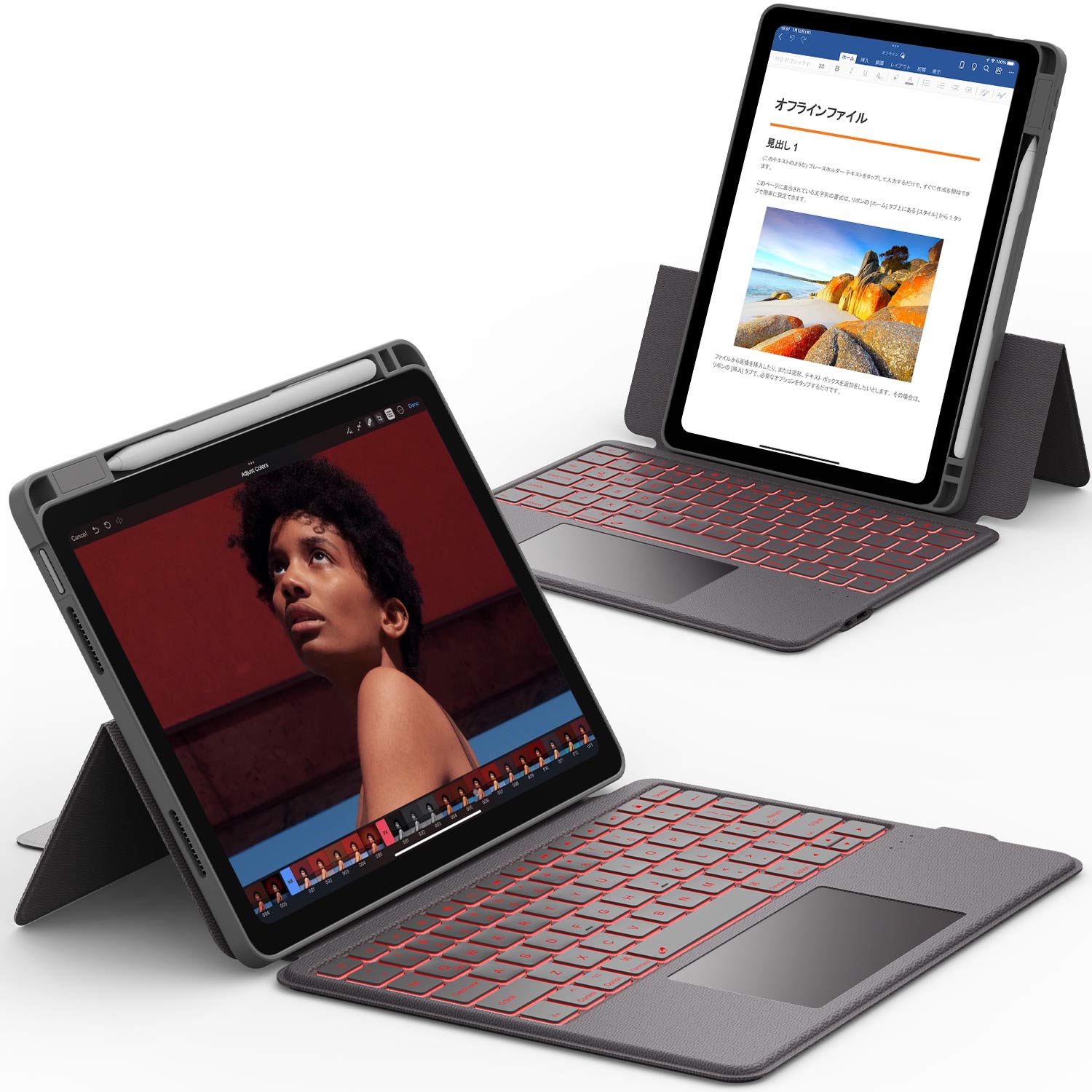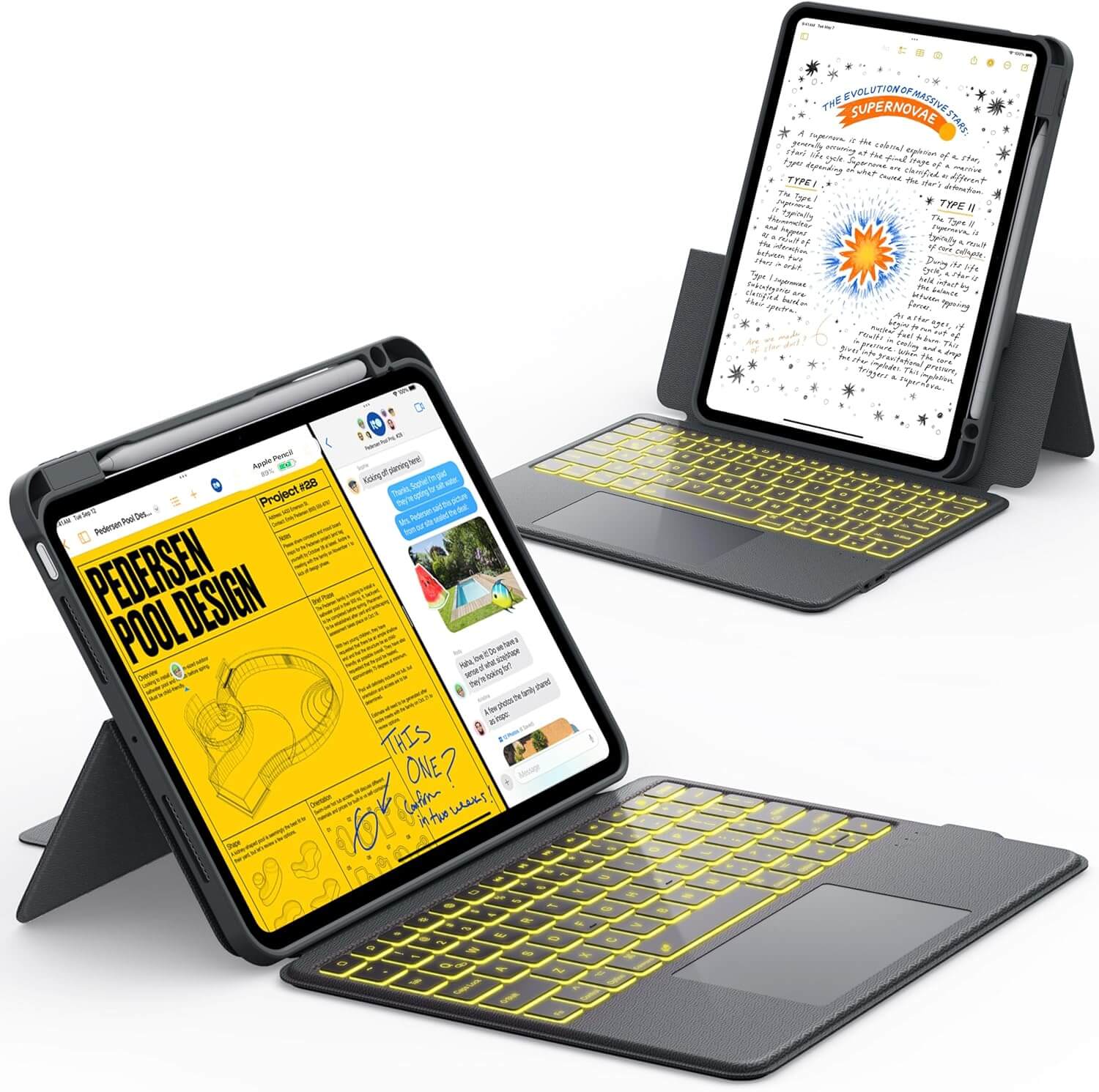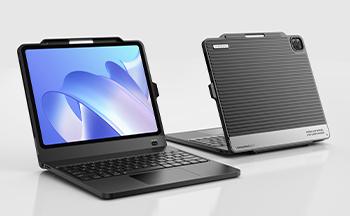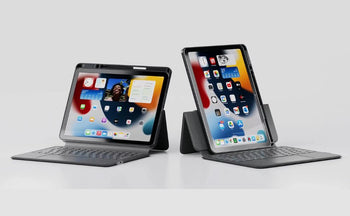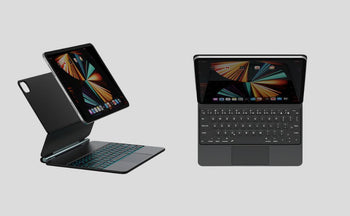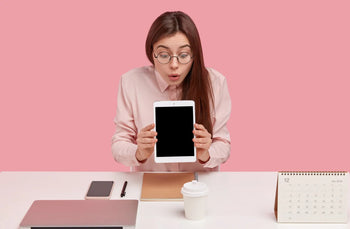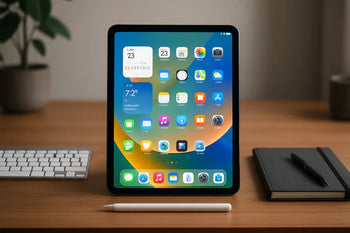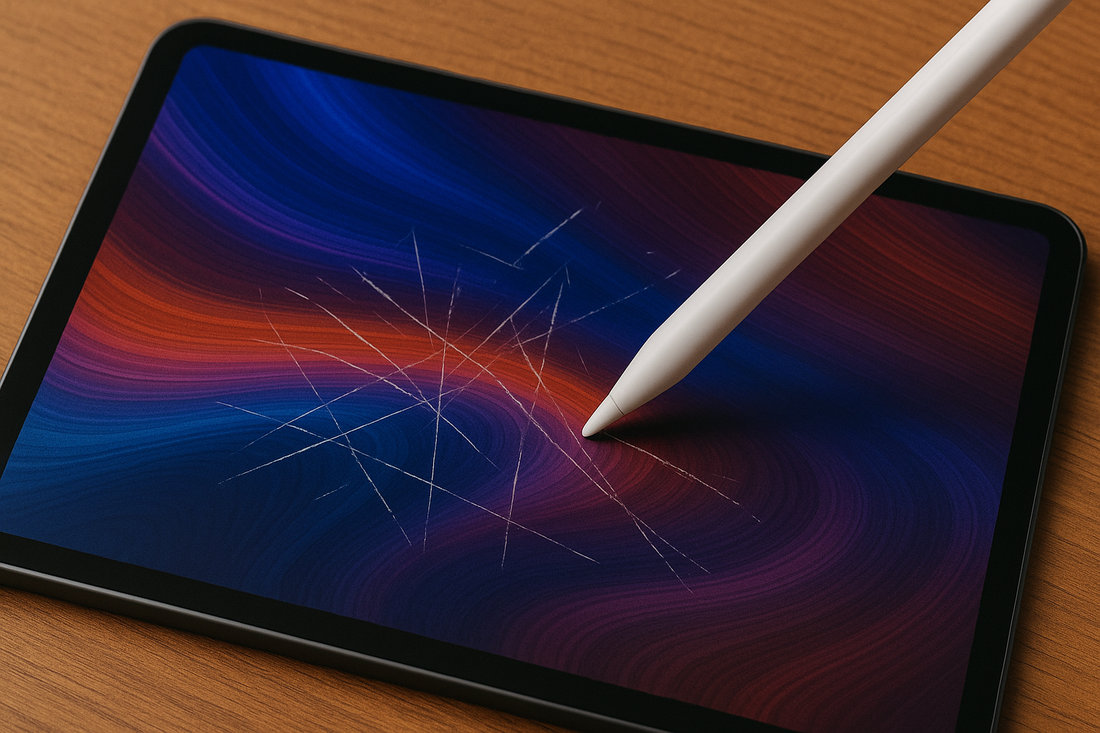Apple Pencil scratching iPad screens is a concern for many users who rely on their device for work, study, or creativity. Even small marks can be distracting and reduce the smooth experience you expect from your iPad.
The good news is that most scratches are preventable with the right care and accessories. By understanding what causes them and how to protect your screen, you can keep your iPad looking and performing like new.
In this guide, we’ll cover the common reasons scratches happen and the simple steps you can take to avoid lasting damage.
Keep your Apple Pencil safe and always within reach. Explore our iPad cases with pencil holders for smart protection and convenient storage.
Why Your Apple Pencil Might Scratch the iPad Screen

Scratches usually come from a few preventable issues. The main risks involve the Apple Pencil tip, particles on the screen, and how you protect the display day to day.
Worn or Rough Apple Pencil Tip
The Apple Pencil has a smooth, replaceable plastic tip designed to glide across the screen without damage. Over time, the tip wears down and can feel rough or lose precision.
If the tip wears enough to expose harder material underneath, the risk of scratching increases—especially if you press down hard while writing or drawing. It’s a good idea to inspect the tip regularly.
If it looks flat, feels rough, or doesn’t move smoothly, swap it out for a new one. Replacement tips are quick to install and help prevent long-term screen damage.
Signs you need a new tip:
- Flat or uneven surface
- Noticeable drag on the screen
- Reduced accuracy when drawing or writing
Dust or Debris on the Screen Surface
Even with a good Pencil tip, tiny particles can scratch the screen. Dust, sand, or dirt trapped between the tip and glass act like abrasives as you move the Pencil.
Outdoor use increases this risk, since grit from tables or bags can transfer to the screen. Even a single grain of sand is enough to leave a mark.
Clean both the iPad screen and Pencil tip before use. A soft microfiber cloth works best. Tissues and rough fabrics can leave lint or cause fine scratches, so skip those.
Quick cleaning steps:
- Wipe the iPad screen with a microfiber cloth.
- Check the Pencil tip for dust before writing.
- Keep the iPad in a case to reduce exposure.
Lack of Proper Protection
The iPad screen is tough glass, but not immune to scratches. Without extra protection, daily use can leave marks, especially if you use the Apple Pencil often.
A screen protector adds a barrier between the Pencil and the display. Glass protectors resist scratches well, while matte protectors give a paper-like feel but can wear Pencil tips faster.
If you skip a screen protector, you’ll need to be extra careful—replace Pencil tips on time, clean the screen often, and avoid using the iPad in dusty environments.
Protection options:
- Tempered glass protector → strong, clear, durable
- Matte protector → textured feel, better for drawing
- Folio case → keeps screen covered when not in use
How to Prevent Screen Scratches

Scratches often come from worn pencil tips, dirt or grit on the display, or a lack of proper protection. Paying attention to your tools and keeping surfaces clean can help you avoid permanent marks.
Replace or Maintain the Apple Pencil Tip
The Apple Pencil tip is made of soft plastic, but it wears down with use. As the outer layer thins, the metal core inside can eventually touch the glass.
This is one of the most common causes of deep scratches. Check your Pencil tip regularly for flat edges, rough spots, or dark dots in the center—these are signs it needs replacement.
Replacing the tip every 6–12 months is a good rule of thumb, but if you draw daily or press harder, you might need to change it sooner. Official tips are usually safest for the iPad’s glass.
Keep the Screen Clean and Smudge-Free
Even though iPad screens are tough, small particles like dust or sand can scratch them. Quartz particles, for example, are harder than glass and can dig into the surface if pressed under the Pencil tip.
Wipe your screen often with a soft microfiber cloth. Avoid paper towels or rough fabrics—they can leave marks or lint behind.
Make it a habit to clean both the screen and the Pencil tip. A single grain of dirt stuck to the tip can act like sandpaper and cause damage before you notice.
Use a Protective Case
A case doesn’t just guard against drops—it helps prevent scratches when you store or carry your iPad. Cases with built-in screen covers and Pencil holders keep the tip from rubbing against the glass when not in use.
Some cases use magnetic covers that close securely, blocking dust and grit from reaching the screen. Others include raised edges around the screen, so the glass doesn’t touch surfaces directly.
Choosing a case with these features adds another layer of protection, lowering the risk of scratches when you set the iPad down. Chesona’s iPad cases are designed with built-in covers and Pencil holders, giving you all-in-one protection and convenience.
Looking for a sleek, professional solution? Discover our iPad Pro folio cases designed for style, function, and all-around screen protection.
What to Do If Scratches Have Already Appeared
Scratches on your iPad screen can range from light marks to deeper grooves. How you handle them depends on the extent of the damage and whether you want to hide, reduce, or prevent them from getting worse.
Assess the Severity of the Damage
Start by cleaning your iPad screen with a microfiber cloth to remove dust and fingerprints. This helps you see if the marks are actual scratches or just smudges.
Check the scratches in bright light at different angles. Light, hairline scratches usually only affect appearance, while deeper scratches can impact touch sensitivity or image clarity.
If the scratches are shallow, you probably don’t need professional repair. For deeper scratches, see if they affect daily use—touch response issues or distracting lines might mean a screen replacement is necessary.
Avoid using abrasive household products like toothpaste or baking soda. They can make the damage worse by creating more fine scratches.
Apply a Screen Protector to Reduce Visibility
A screen protector can make existing scratches less noticeable and prevent new ones. Tempered glass protectors add a smooth outer layer that hides deeper marks, while matte protectors reduce glare and make light scratches harder to see.
When applying a protector, clean the screen carefully to avoid trapping dust. Even small particles under the protector can create bubbles or uneven spots.
If scratches are only cosmetic, a protector is often the most cost-effective solution. It won’t repair the glass, but it can improve the look of the display and help your screen last longer.
Some people prefer matte film protectors for the paper-like feel, though they may wear down pencil tips faster.
Need extra durability and productivity in one? Check out our heavy duty iPad cases with keyboard for rugged protection and seamless typing.
Conclusion: Apple Pencil Scratching iPad
Scratches from an Apple Pencil don’t have to ruin your iPad experience. With a few preventative steps—like maintaining your Pencil tip, keeping your screen clean, and using a protective case—you can safeguard your device for the long run.
If scratches have already appeared, don’t worry. Simple fixes like adding a screen protector can help minimize their visibility while preventing future damage.
Want more tips to get the most out of your iPad? Check out our guide on the best writing tablets to explore tools that make digital writing even smoother.
Frequently Asked Questions: Apple Pencil Scratching iPad
Apple Pencil tips are designed to be safe for iPad screens, but worn tips or trapped dust can still create scratches. Simple steps like replacing tips, cleaning surfaces, and using protective accessories help reduce the risk.
How to prevent Apple Pencil from scratching iPad?
Check the Pencil tip often and replace it when it shows wear or feels rough.
Wipe both the screen and the Pencil tip before use to remove dust or grit.
Adding a screen protector gives an extra layer of protection against scratches.
Does an Apple Pencil cause scratches on the screen?
A new Apple Pencil with an intact tip won’t scratch the iPad screen.
Scratches usually happen if the tip is damaged, worn down, or if dirt gets trapped between the tip and the glass.
How to get rid of Apple Pencil marks on iPad?
If you notice smudges or streaks, clean the screen with a soft microfiber cloth.
For tougher marks, lightly dampen the cloth with water or a screen-safe cleaner.
If the screen has deep scratches, cleaning won’t remove them, and repair may be needed.
Do you need a screen protector for the Apple Pencil?
The Apple Pencil works just fine without a screen protector. The glass holds up well on its own.
Still, a screen protector can guard against scratches from dust or a worn Pencil tip. Some matte protectors even add a bit of texture, making writing feel closer to paper.
Keep in mind, though, that matte protectors might wear down Pencil tips a bit faster than glass ones. For all-around protection without the trade-offs, Chesona’s folio and heavy-duty cases add durable screen coverage and Pencil storage in one.
